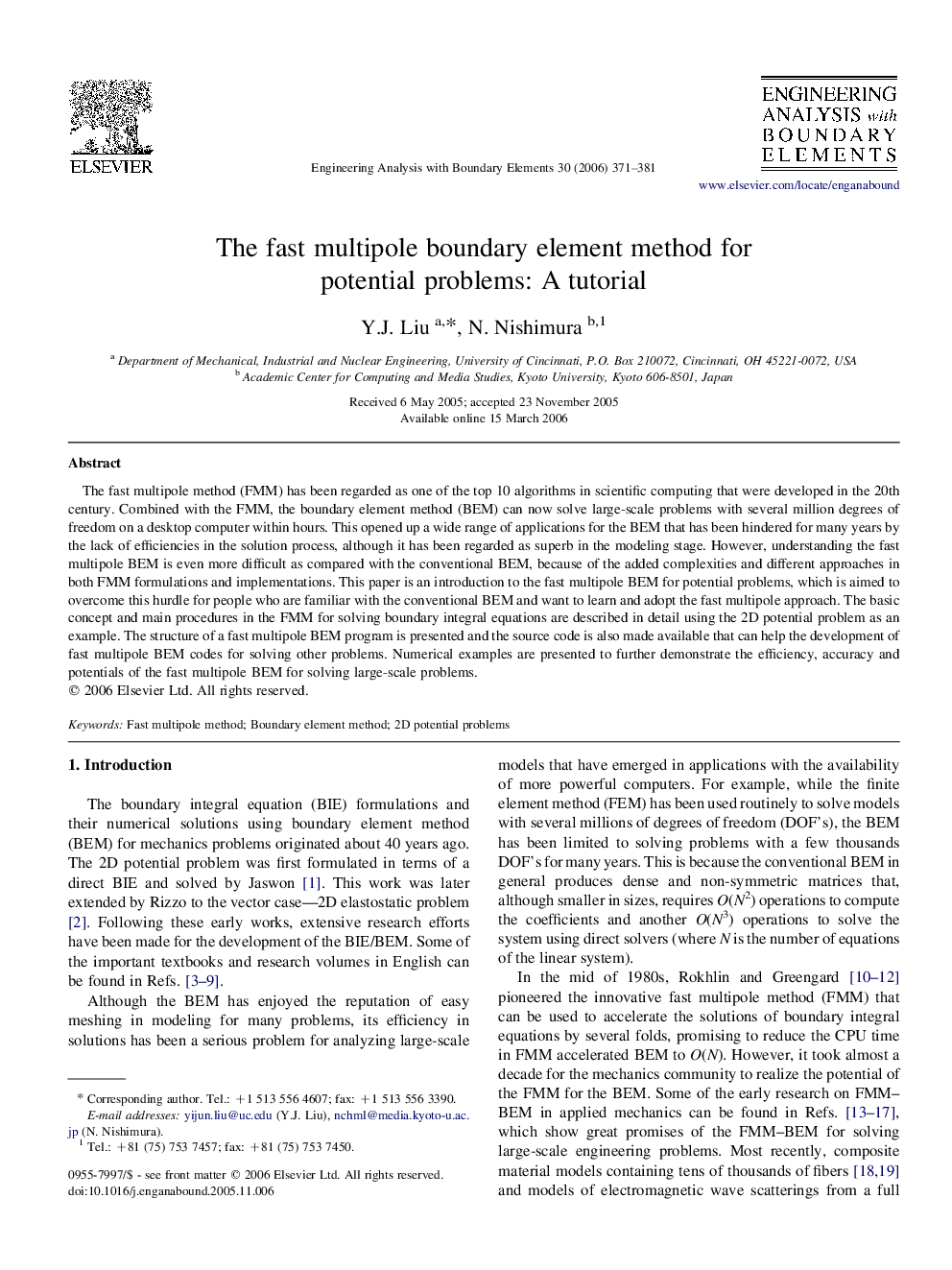| Article ID | Journal | Published Year | Pages | File Type |
|---|---|---|---|---|
| 513633 | Engineering Analysis with Boundary Elements | 2006 | 11 Pages |
The fast multipole method (FMM) has been regarded as one of the top 10 algorithms in scientific computing that were developed in the 20th century. Combined with the FMM, the boundary element method (BEM) can now solve large-scale problems with several million degrees of freedom on a desktop computer within hours. This opened up a wide range of applications for the BEM that has been hindered for many years by the lack of efficiencies in the solution process, although it has been regarded as superb in the modeling stage. However, understanding the fast multipole BEM is even more difficult as compared with the conventional BEM, because of the added complexities and different approaches in both FMM formulations and implementations. This paper is an introduction to the fast multipole BEM for potential problems, which is aimed to overcome this hurdle for people who are familiar with the conventional BEM and want to learn and adopt the fast multipole approach. The basic concept and main procedures in the FMM for solving boundary integral equations are described in detail using the 2D potential problem as an example. The structure of a fast multipole BEM program is presented and the source code is also made available that can help the development of fast multipole BEM codes for solving other problems. Numerical examples are presented to further demonstrate the efficiency, accuracy and potentials of the fast multipole BEM for solving large-scale problems.
